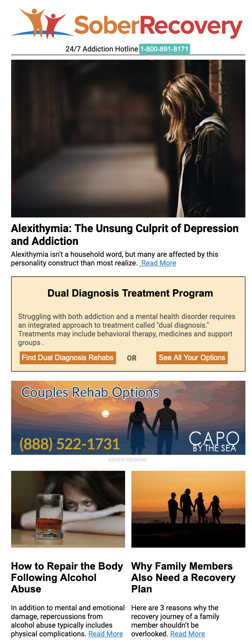Facts and Adverse Effects of Meth Princeton NJ
Substance abuse
Types of Care
Outpatient
Special Programs/Groups
DUI/DWI offenders

Substance abuse , Halfway house
Types of Care
Residential long-term treatment (more than 30 days)
Special Programs/Groups
Women

Substance abuse , Detoxification, Buprenorphine Services
Types of Care
Hospital inpatient

Substance abuse
Types of Care
Outpatient
Special Programs/Groups
Persons with HIV/AIDS, Men, DUI/DWI offenders, Criminal justice clients
Language Services
Spanish

Substance abuse
Types of Care
Outpatient
Special Programs/Groups
Adolescents, Persons with HIV/AIDS
Language Services
ASL or other assistance for hearing impaired, Spanish

Substance abuse , Detoxification, Buprenorphine Services
Types of Care
Hospital inpatient, Outpatient
Special Programs/Groups
Adolescents, Persons with co-occurring mental and substance abuse disorders, Women

Substance abuse
Types of Care
Outpatient
Special Programs/Groups
Persons with co-occurring mental and substance abuse disorders, Persons with HIV/AIDS, Men, DUI/DWI offenders

Substance abuse
Types of Care
Outpatient
Special Programs/Groups
Persons with co-occurring mental and substance abuse disorders, DUI/DWI offenders
Language Services
ASL or other assistance for hearing impaired, Spanish

Trenton, NJ
Substance abuse
Types of Care
Outpatient, Partial hospitalization/day treatment
Special Programs/Groups
Adolescents, Persons with co-occurring mental and substance abuse disorders, Seniors/older adults, Pregnant/postpartum women, Women, Men, DUI/DWI offenders, Criminal justice clients
Language Services
Spanish

Substance abuse , Halfway house
Types of Care
Outpatient


Facts and Adverse Effects of Meth
Pleasure centers of the brain are adversely affected by the stimulant effects of the Methamphetamine (Meth) which is a highly addictive synthetic stimulant. Even more addictive than heroin. Meth is sometimes referred to as “Speed,” “Chalk,” “Ice,” “Crystal,” “Glass,” “Crank,” “Yaba,” “Fire,” Tina,” and “Tweak.” Meth releases high levels of the neurotransmitter dopamine, which stimulates brain cells, enhances mood and body movement, and regulates feelings of pleasure. With repeated use, Meth can “turn off” the brain’s ability to produce dopamine, leaving users unable to experience any kind of pleasure from anything other than more and more Meth.Meth is derived from amphetamine, and is commonly made using the base chemicals ephedrine or pseudoephedrine found in over-the-counter medicines. Other common household products can be added to make Meth, including: acetone (nail polish remover), iodine, anhydrous ammonia (fertilizer), hydrochloric acid (pool chemicals), lithium (batteries), red phosphorus (matches or road flares), sodium hydroxide (lye), sulfuric acid (drain cleaner), and toluene (brake fluid).
Although there are multiple ways to produce Meth, most involve the use of toxic and volatile substances that can pose a threat to the surrounding area. An odor similar to that of cat urine and other offensive fumes often signify that an illegal M...
Click here to read the rest of this article from Sober Recovery
Featured Facilities
Compassionate care for individuals with opioid and alcohol use disorders. Substance use disorders are a leading cause of death, incarceration, hospitalizations, motor vehicle crashes, and numerous medical complications such as hepatitis C and HIV. We are passionate about recovery, and strive to help each patient achieve their own recovery from substance use disorders is a lifelong journey which begins with education, medical optimization, and accountability.We are proud to serve Texas as the Top Houston Suboxone Doctor and the surrounding areas with In-Office and Virtual Visit Appointments! He provides Concierge-level compassionate care for individuals with Opioid and Alcohol Use Disorders and believes treatment for addiction works to help individuals maintain long-term abstinence and recovery.With Dr. Giannotti, appointments are zero-wait, always on time as he specializes in services and treatments such as:- Anxiety treatment- Depression treatment- Insomnia treatment- Medication Assisted Treatment (MAT)Sometimes the smallest step in the right direction ends up being the biggest step in one's life. Tip Toe if you must, but Dr. Giannotti is here to take the step beside you.
Choosing the right treatment center can be paramount in one’s chance at recovery. While the treatment facility creates a foundation of tools needed for recovery, it is truly the individual, and not the addiction treatment center that determines the end result. When it comes to yourself or a loved one, you are going to want to make sure to choose a facility that has professional accreditations. Located in the Atlanta, Georgia area, Southeast Addiction Center ensures each client receives the tools needed to live a life without addictive substances.From individual therapy to group therapy, to trauma-based therapy and 12-step support, our clients learn how to find their own strength as well as create a support system around them. The transition from addiction to sobriety can be hard, however, at our drug and alcohol rehabilitation program, we guide each client through the process – step by step.
At Skywood, we are deeply invested in helping you regain your health. Our programming approach to recovery is designed with that in mind, from individual and group therapy to adventure therapy, art therapy and yoga. Each of these activities builds on the others to get to the root causes of addiction, introduce healthy new habits, address any co-occurring mental health issues and provide the mental and physical space you need in order to heal. We also provide access to regular 12-Step meetings and peer support groups. What we do at Skywood is different for several reasons. First, we treat addiction and mental health at the same time in a highly integrated way, looking to restore a person’s physical, emotional, mental and spiritual well-being. Second, we focus on resolving trauma, underlying issues and deep-rooted emotional pain that often causes substance abuse in the first place. Lastly, we emphasize life skills that help each person build a foundation for sustainable, long-term recovery.
Addiction is a disease that no one should have to deal with alone. It is imperative that citizens of a city or county have access to top quality addiction treatment services. People from all walks of life can be susceptible to developing a substance use disorder in response to trauma they have endured, or lifestyle circumstances begetting maladaptive coping mechanisms.When a person is in the grips of addiction, they can become isolated and unable to see their condition for what it is—an illness that can be managed.Whether you are in Nashville or in the greater Nashville area such as Brentwood, Franklin, Hendersonville, etc, at Southeast Addiction, our outpatient addiction treatment programs offer something for individuals of all levels of commitment.




